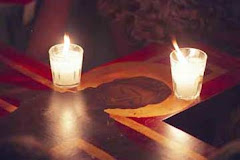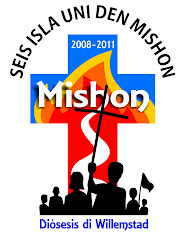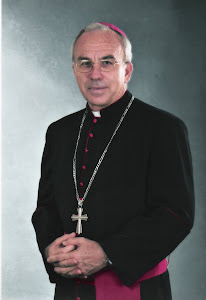
Vatican City, Apr 3, 2010 / (CNA/EWTN News).-
Pope Benedict XVI presided this Saturday evening the Easter Vigil at the Vatican Basilica, and during the homily he highlighted the human desire for longevity and even eternity, noting that in the Risen Christ, “this cure for death, this true medicine of immortality, does exist.”
The full homily of Pope Benedict XVI at the Easter Vigil Mass follows:
An ancient Jewish legend from the apocryphal book "The life of Adam and Eve" recounts that, in his final illness, Adam sent his son Seth together with Eve into the region of Paradise to fetch the oil of mercy, so that he could be anointed with it and healed. The two of them went in search of the tree of life, and after much praying and weeping on their part, the Archangel Michael appeared to them, and told them they would not obtain the oil of the tree of mercy and that Adam would have to die. Subsequently, Christian readers added a word of consolation to the Archangel’s message, to the effect that after 5,500 years the loving King, Christ, would come, the Son of God who would anoint all those who believe in him with the oil of his mercy. "The oil of mercy from eternity to eternity will be given to those who are reborn of water and the Holy Spirit. Then the Son of God, Christ, abounding in love, will descend into the depths of the earth and will lead your father into Paradise, to the tree of mercy." This legend lays bare the whole of humanity’s anguish at the destiny of illness, pain and death that has been imposed upon us. Man’s resistance to death becomes evident: somewhere – people have constantly thought – there must be some cure for death. Sooner or later it should be possible to find the remedy not only for this or that illness, but for our ultimate destiny – for death itself. Surely the medicine of immortality must exist. Today too, the search for a source of healing continues. Modern medical science strives, if not exactly to exclude death, at least to eliminate as many as possible of its causes, to postpone it further and further, to prolong life more and more. But let us reflect for a moment: what would it really be like if we were to succeed, perhaps not in excluding death totally, but in postponing it indefinitely, in reaching an age of several hundred years? Would that be a good thing? Humanity would become extraordinarily old, there would be no more room for youth. Capacity for innovation would die, and endless life would be no paradise, if anything a condemnation. The true cure for death must be different. It cannot lead simply to an indefinite prolongation of this current life. It would have to transform our lives from within. It would need to create a new life within us, truly fit for eternity: it would need to transform us in such a way as not to come to an end with death, but only then to begin in fullness. What is new and exciting in the Christian message, in the Gospel of Jesus Christ, was and is that we are told: yes indeed, this cure for death, this true medicine of immortality, does exist. It has been found. It is within our reach. In baptism, this medicine is given to us. A new life begins in us, a life that matures in faith and is not extinguished by the death of the old life, but is only then fully revealed.
To this some, perhaps many, will respond: I certainly hear the message, but I lack faith. And even those who want to believe will ask: but is it really so? How are we to picture it to ourselves? How does this transformation of the old life come about, so as to give birth to the new life that knows no death? Once again, an ancient Jewish text can help us form an idea of the mysterious process that begins in us at baptism. There it is recounted how the patriarch Enoch was taken up to the throne of God. But he was filled with fear in the presence of the glorious angelic powers, and in his human weakness he could not contemplate the face of God. "Then God said to Michael," to quote from the book of Enoch, "‘Take Enoch and remove his earthly clothing. Anoint him with sweet oil and vest him in the robes of glory!’ And Michael took off my garments, anointed me with sweet oil, and this oil was more than a radiant light … its splendour was like the rays of the sun. When I looked at myself, I saw that I was like one of the glorious beings" (Ph. Rech, Inbild des Kosmos, II 524).
Precisely this – being reclothed in the new garment of God – is what happens in baptism, so the Christian faith tells us. To be sure, this changing of garments is something that continues for the whole of life. What happens in baptism is the beginning of a process that embraces the whole of our life – it makes us fit for eternity, in such a way that, robed in the garment of light of Jesus Christ, we can appear before the face of God and live with him for ever.
In the rite of baptism there are two elements in which this event is expressed and made visible in a way that demands commitment for the rest of our lives. There is first of all the rite of renunciation and the promises. In the early Church, the one to be baptized turned towards the west, the symbol of darkness, sunset, death and hence the dominion of sin. The one to be baptized turned in that direction and pronounced a threefold "no": to the devil, to his pomp and to sin. The strange word "pomp", that is to say the devil’s glamour, referred to the splendour of the ancient cult of the gods and of the ancient theatre, in which it was considered entertaining to watch people being torn limb from limb by wild beasts. What was being renounced was a type of culture that ensnared man in the adoration of power, in the world of greed, in lies, in cruelty. It was an act of liberation from the imposition of a form of life that was presented as pleasure and yet hastened the destruction of all that was best in man. This renunciation – albeit in less dramatic form – remains an essential part of baptism today. We remove the "old garments", which we cannot wear in God’s presence. Or better put: we begin to remove them. This renunciation is actually a promise in which we hold out our hand to Christ, so that he may guide us and reclothe us. What these "garments" are that we take off, what the promise is that we make, becomes clear when we see in the fifth chapter of the Letter to the Galatians what Paul calls "works of the flesh" – a term that refers precisely to the old garments that we remove. Paul designates them thus: "fornication, impurity, licentiousness, idolatry, sorcery, enmity, strife, jealousy, anger, selfishness, dissension, party spirit, envy, drunkenness, carousing and the like" (Gal 5:19ff.). These are the garments that we remove: the garments of death.
Then, in the practice of the early Church, the one to be baptized turned towards the east – the symbol of light, the symbol of the newly rising sun of history, the symbol of Christ. The candidate for baptism determines the new direction of his life: faith in the Trinitarian God to whom he entrusts himself. Thus it is God who clothes us in the garment of light, the garment of life. Paul calls these new "garments" "fruits of the spirit", and he describes them as follows: "love, joy, peace, patience, kindness, goodness, faithfulness, gentleness, self-control" (Gal 5:22).
In the early Church, the candidate for baptism was then truly stripped of his garments. He descended into the baptismal font and was immersed three times – a symbol of death that expresses all the radicality of this removal and change of garments. His former death-bound life the candidate consigns to death with Christ, and he lets himself be drawn up by and with Christ into the new life that transforms him for eternity. Then, emerging from the waters of baptism the neophytes were clothed in the white garment, the garment of God’s light, and they received the lighted candle as a sign of the new life in the light that God himself had lit within them. They knew that they had received the medicine of immortality, which was fully realized at the moment of receiving holy communion. In this sacrament we receive the body of the risen Lord and we ourselves are drawn into this body, firmly held by the One who has conquered death and who carries us through death.
In the course of the centuries, the symbols were simplified, but the essential content of baptism has remained the same. It is no mere cleansing, still less is it a somewhat complicated initiation into a new association. It is death and resurrection, rebirth to new life.
Indeed, the cure for death does exist. Christ is the tree of life, once more within our reach. If we remain close to him, then we have life. Hence, during this night of resurrection, with all our hearts we shall sing the alleluia, the song of joy that has no need of words. Hence, Paul can say to the Philippians: "Rejoice in the Lord always, again I will say, rejoice!" (Phil 4:4). Joy cannot be commanded. It can only be given. The risen Lord gives us joy: true life. We are already held for ever in the love of the One to whom all power in heaven and on earth has been given (cf. Mt 28:18). In this way, confident of being heard, we make our own the Church’s Prayer over the Gifts from the liturgy of this night: Accept the prayers and offerings of your people. With your help may this Easter mystery of our redemption bring to perfection the saving work you have begun in us. Amen.
zaterdag 3 april 2010
Pope at Easter vigil: Jesus shows that cure for death does exist
Posted by Rutzen Lucas at 3.4.10 0 comments
Pope Benedict at the Way of the Cross: May Jesus help us overcome evil with good

Vatican City, Apr 2, 2010 / (CNA/EWTN News).-
During an emotional Way of the Cross celebrated on Good Friday evening at the Coliseum in Rome, Pope Benedict prayed that Christians, by following the example of Jesus, may be able to overcome evil with good.
Pope Benedict followed the meditations of the Way of the Cross prepared this year by the Emeritus Vicar of Rome, Cardinal Camillo Ruini.
In his introduction to the Via Crucis, Cardinal Ruini wrote:
When the Apostle Philip asked Jesus, “Lord, show us the Father,” he replied, “Have I been with you all this time, and you still do not know me? Whoever has seen me has seen the Father” (Jn 14:8-9). This evening, as we accompany Jesus in our hearts while he makes his way beneath the cross, let us not forget those words. Even as he carries the cross, even in his death on the cross, Jesus remains the Son, who is one with God the Father. When we look upon his face disfigured by beating, weariness and inner suffering, we see the face of the Father. Indeed, it is precisely in this moment that God’s glory, his surpassing splendor, in some way becomes visible on the face of Jesus. In this poor, suffering man whom Pilate, in the hope of eliciting compassion, showed to the Jews with the words “Behold the man!” (Jn 19:5), we see revealed the true greatness of God, that mysterious grandeur beyond all our imagining.
Yet in the crucified Jesus we see revealed another kind of grandeur: our own greatness, the grandeur which belongs to every man and woman by the simple fact that we have a human face and heart. In the words of Saint Anthony of Padua, “Christ, who is your life, hangs before you, so that you can gaze upon the cross as if in a mirror… If you look upon him, you will be able to see the greatness of your dignity and worth… Nowhere else can we better recognize our own value, than by looking into the mirror of the cross”. Jesus, the Son of God, died for you, for me, for each of us. In this way he gave us concrete proof of how great and precious we are in the eyes of God, the only eyes capable of seeing beyond all appearances and of peering into the depths of our being.
As we make the Way of the Cross, let us ask God to grant us this gaze of truth and love, so that, in union with him, we may become free and good.
Immediately after, Pope Benedict said the following prayer.
Lord God, almighty Father,
you know all things
and you see, hidden within our hearts, our great need for you.
Grant each of us the humility to acknowledge this need.
Free our mind from the pretension,
wrong-headed and even ridiculous,
that we can master the mystery which embraces us.
Free our will from the presumption,
equally naïve and unfounded,
that we can create our own happiness
and the meaning of our lives.
Enlighten and purify our inner eye,
and enable us to recognize, free of all hypocrisy,
the evil which lies within us.
But grant us too,
in the light of the cross and resurrection of your only Son,
the certainty that, united to him and sustained by him,
we too can overcome evil with good.
Lord Jesus,
help us, in this spirit, to walk behind your cross.
Posted by Rutzen Lucas at 3.4.10 0 comments











